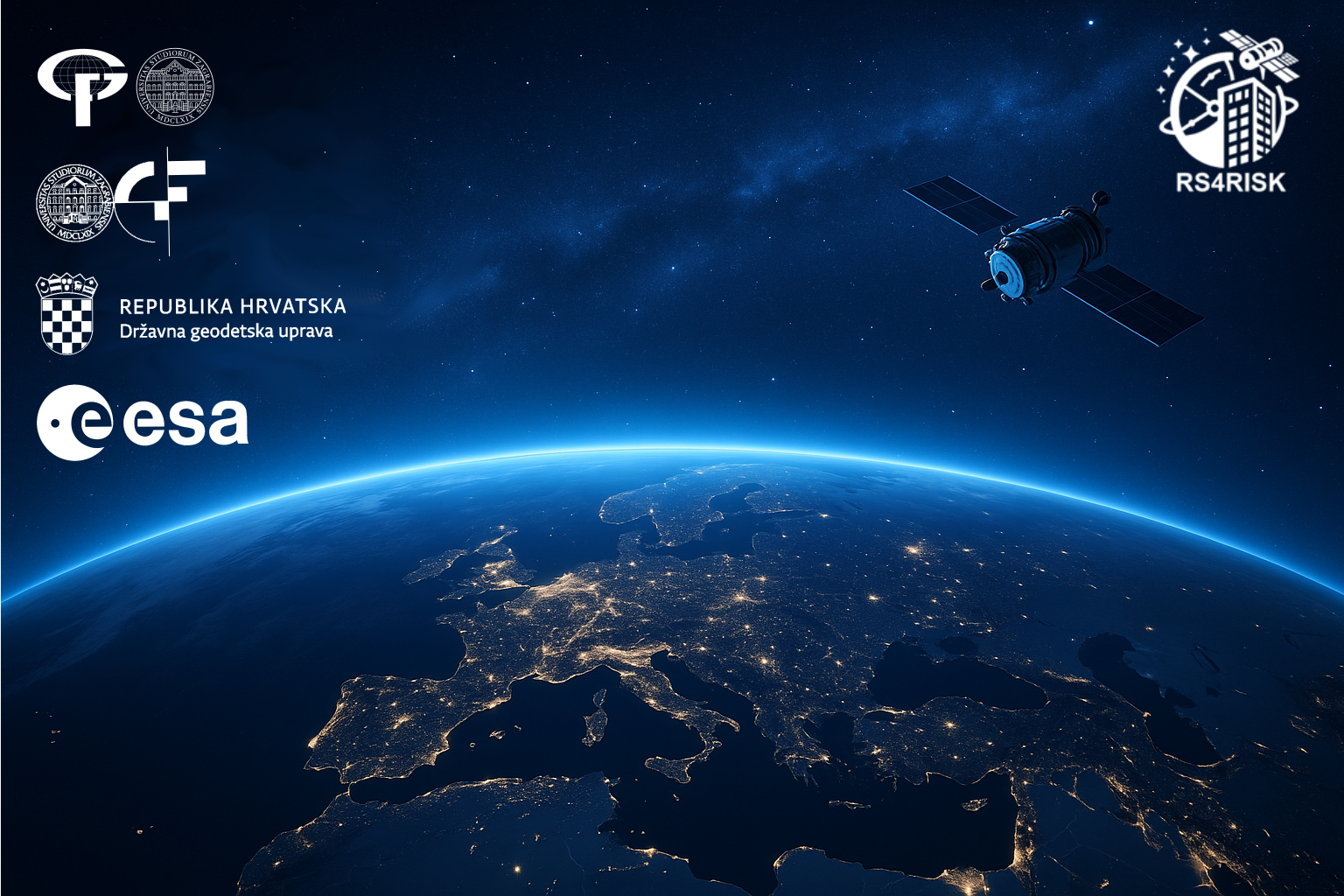
The European Space Agency’s tender approved the project proposal “Automatic urbanisation monitoring for risk assessment by remote sensing and Copernicus data”. This project proposal is the result of many years of interdisciplinary research in the field of geodesy, geoinformatics and civil engineering. The project holder is the Faculty of Geodesy, University of Zagreb, with partners from Faculty of Civil Engineering University of Zagreb and the State Geodetic Administration.
The development of an automatic system for urbanisation monitoring for risk assessment based on remote sensing methods and Copernicus data will enable the acquisition of accurate and current spatial and attribute data of buildings. The Republic of Croatia is selected as the study area, but the problem solution can be significant worldwide. The project’s main topic is the development of downstream applications depending on the use of space data from the European Space Agency’s Copernicus program (Sentinel 2). Remote sensing techniques are considered a robust tool for acquiring actual and accurate spatial and attribute data at a large scale. The European Space Agency’s Copernicus program, with its satellite segment, Sentinel 2, provides free access to high spatial and temporal resolution satellite images. Since ESA provides high-quality 10-m spatial resolution optical satellite imagery (Sentinel 2) globally, we believe that this project has great importance for accurate and rapid urbanisation monitoring and risk assessment variables acquiring. Furthermore, proposed technology and automatic methods will be easily applied worldwide.
Evaluation of performance and damage assessment of seismically vulnerable buildings is one of the key aspects of implementing risk mitigation strategies. This implies proper and cost-effective action by target retrofit of critical groups of buildings before an earthquake occurs and through detailed plans of sheltering, rescue interventions and damage assessment in the post-earthquake phase. Remote sensing techniques provide valuable data for the assessment of both earthquake hazards and risk assessment. While the building height and boundaries are obtained by processing the remote sensing data with various techniques, there is no study to determine the building year, which is an important parameter for seismic vulnerability. Although some researchers have used the building year as a parameter, they have generally tried to hypothetically estimate this data depending on the structural system type of the building (masonry, reinforced concrete, steel, etc.) (Borfecchia et al. 2010, Liuzzi et al. 2019). The development of the method for the automatic construction year assessment based on Copernicus and other Earth Observation data will be the project’s main goal.
The project is planned to be realized at the city scale (micro study sites), and which are expensive, time-consuming, and labour-intensive to collect with traditional methods. In this way, the urbanisation monitoring and risk assessment procedure will be accelerated. This project proposal’s main goal is to develop and test a prototype for automatic urbanisation monitoring for risk assessment aided by remote sensing and Copernicus data for fast and accurate data acquisition and to provide improved risk assessment for the study sites in Croatia. The goal is planned to be achieved with three specific objectives:
- Development of algorithm and prototype for automatic urbanisation monitoring for risk assessment by remote sensing methods and Copernicus data
- Development of algorithm and prototype for automatic construction year assessment based on the freely available satellite imagery (e.g., Sentinel 2, SPOT, Landsat)
- Development of algorithm and prototype for automatic building height and area extraction based on Very high-resolution satellite imagery (VHRSI, e.g., WorldView)
- Verification of the developed algorithm by LiDAR and aero photogrammetry data, as well as ground truth measurements
- Production of actual and accurate building inventory information for national registers, improved risk assessment maps and other visualisations and analysis based on the developed algorithm
